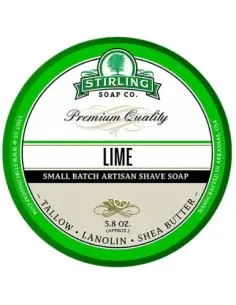- HairMaker.Gr
- Traditional Shaving
- 2 likes
- 6272 views
- 0 comments
- shaving cream, shaving soap, Shaving Brushes
Listen to our article as a podcast:
Secrets to the Perfect, Creamy Shaving Foam

Article Contents
Today we’ll talk about a “hot” topic for every traditional shaving enthusiast: how to achieve the ideal, creamy lather using shaving cream properly. If you love the process, the scent, and the ritual of classic shaving, this article is for you.
I’m Giannis from HairMaker.Gr and I’ll share everything I’ve tried over the years: techniques, tips, little secrets, and failures turned into lessons.
❓ Have questions or want to share your own experience? Write in the comments at the end or contact us through our contact page.
Can’t wait to chat! Let’s dive in…
Don’t Skip Brush Preparation
Many underestimate the importance of properly preparing the shaving brush. Soak it in hot water for a few minutes to soften the bristles and hold just the right amount of water to build a rich, elastic lather. This is especially crucial for natural-hair brushes like badger or boar, which need time to work properly.
Choosing the Right Shaving Cream
Not all shaving creams are created equal. If you have dry skin, look for hydrating ingredients like aloe vera, glycerin, or coconut oil. For sensitive skin, choose fragrance-free, gentle formulas. Picking the right cream affects both your lather and overall comfort.
Bowl vs Face Lathering? Your Call
There are two main methods: using a bowl or lathering directly on the face. The bowl offers better control and a more “ritual” feel. Face lathering gives gentle exfoliation and saves time. Choose what suits you!
Common Mistakes That Ruin the Lather
If your foam looks like soup or paste, something’s off. The most frequent mistake is too much or too little water. Also, load your brush properly with product. Don’t forget brush prep—especially with natural hair bristles.
The Role of Water
Water quality is decisive. Hard water minerals reduce soap or cream performance. Soft water helps create dense, stable lather.
Soaps & Creams
Shaving soaps last longer but require technique. Creams whip up faster and are ideal for beginners.
Handy Tips
- Don’t press the brush—let it work its magic.
- Use circular motions for better lather build.
- Shave after a shower when hairs are softer.
My Experience with Shaving Cream ✅
As a fan of traditional shaving, I always test new products before they hit HairMaker.Gr. I recall a day at a barbershop in central Athens when the barber used eucalyptus-scented cream. He explained how crucial the correct water ratio is—neither too much nor too little.
After that, I experimented at home with varying amounts and bowls. I saw that a pre-soaked brush makes all the difference. Even the same cream, if lathered properly, can triple shaving comfort.
Since then, whenever I talk to a customer, I ask: “How do you work your cream?” Often the issue isn’t the product—it’s the technique.
– Giannis, HairMaker.Gr
A More Personal Take on Creamy Shaving Foam
✨ I won’t repeat the usual. You know that good cream needs a good whip. But here, I’ll share what I’ve learned in practice—not from manuals, but from mirror tests and talks with old-school barbers.
✔️ One day at a traditional barbershop in Piraeus, I saw an old barber warm his ceramic bowl with hot water first! I tried it and immediately noticed the difference: denser, warmer foam—like a facial massage. I’ve been doing it ever since.
⚠️ And if you think a bowl is just a container, think again. Metal cools foam faster, while ceramic keeps it “alive” longer. Try both to find what works for you.
✅ Finally, a game-changer: one drop of eucalyptus essential oil in the cream. Nobody mentions it, but it elevates the experience—cooling and awakening the skin. No wonder many Italian barbers swear by it.
– Giannis, HairMaker.Gr
✅ What’s the Best Brush for Beginners?
If you’re new to traditional shaving, the brush is one of your most essential tools. The right brush makes the process more enjoyable, helps build rich lather, and prepares your skin for irritation-free shaving.
Synthetic brushes: Very soft, no break-in period, dry quickly, and work with all creams and soaps. Ideal for beginners.
Boar brushes: Provide exfoliation and improve with use. Very affordable.
Badger brushes: Avoid at first due to cost and maintenance needs.
Knot size: 22–24 mm is ideal for beginners. Avoid overly large knots.
Technique: Soak 1–2 minutes and build lather with circular motions.
Care: Rinse, dry with bristles downward, keep away from moisture.
Beginner recommendations:
- Yaqi Sagrada Familia 24mm – synthetic with nice design.
- Omega 10065 – boar, great for soaps and face lathering.
- Edwin Jagger Synthetic – ergonomic with premium feel.
- Parker SynPure – gentle on skin, excellent for creams.
Remember: there’s no “perfect” brush for everyone. Experiment, observe, and you’ll find your match.
✅ How Often Should I Replace My Shaving Brush?
A quality shaving brush can last many years with proper care. There’s no strict replacement timeline—it depends on material, usage frequency, and maintenance.
Synthetic brushes: Durable, stay in top shape for 4–7 years, dry quickly, and rarely shed.
Natural-hair brushes: (boar or badger) can last 5–10 years but require meticulous care to avoid damage or odor.
Signs of wear:
- Excessive shedding
- Poor lather performance
- Persistent odor after washing
- Cracked handle or broken bristles
- Loss of spring and shape
If you see these, it’s time for a new brush.
Maintenance tips:
- Rinse with lukewarm water after each use
- Store only when fully dry
- Dry with bristles downward
- Avoid excessive bowl pressure
A user shaving 3–4 times weekly with good care can keep a brush 5–6 years.
Tip: Rotate multiple brushes to extend life and improve hygiene.
Replacement isn’t about dates, but experience quality. If shaving feels off, consider a new brush.
✅ Is a Shaving Bowl Necessary?
A shaving bowl isn’t mandatory but is a highly useful tool for those seeking a consistent, rich lather before every shave. It gives you control over lather volume and texture.
Lather control: With a bowl, you can work the foam better, especially with hard soaps or creams requiring water blending. The brush aerates properly, building more uniform lather.
Face lathering: Without a bowl, you can lather directly on your face. It offers a massage effect and simplicity but demands experience in moisture control.
Beginner challenges: Without a bowl, achieving the right lather texture can be tough, leading to poor performance or irritation.
Advantages of a shaving bowl:
- Stable, rich lather with less product
- Cleaner experience—no sink mess
- Adaptable to different soaps and creams
Bowl materials: Ceramic (heat-retaining), wood (traditional), inox (durable), melamine (light). You can start with a simple kitchen bowl.
Avoid: Bowls with smooth, glossy interiors—brush can slip and lather won’t stabilize.
Conclusion: No, it’s not compulsory, but it makes shaving more enjoyable, consistent, and clean. For technical improvement, it’s a small investment with great return.
What Professional Barbers Say
“I prefer face-lathering because it gives me a better feel for when the lather is ready. I sense resistance on the skin and can adjust pressure and moisture accordingly.”
– Marios Karagiannis, Barber at Classic Cuts, Athens
“For beginners, I always recommend a bowl. They learn to whip the lather correctly without risking mistakes on the client’s face. Then they move on to face-lathering.”
– Antonis Verykios, Owner of Gentlemen’s Spot, Patras
“When I want to impress with a traditional shave, I use soap in a bowl. It builds an aromatic, stable lather reminiscent of the old school.”
– Stefanos Tsaousis, Barber & Trainer, Thessaloniki
✅ What to Do If My Foam Is Too Thin?
If your lather comes out watery, transparent, or “lifeless,” something’s wrong with your water-to-product ratio or whipping process. Thin foam offers no protection and can lead to irritation or cuts.
First step: Reduce water. Often the brush holds too much moisture and releases it into the lather. Wring out the brush—aim for damp, not dripping.
In a bowl, try adding a bit more soap or cream and whip for another 30–60 seconds. Lather often “rescues itself” with more product and time.
If face-lathering, add product directly to the brush or face and whip with circular motions until you build a richer texture.
Different soaps behave differently. Tallow-based or triple-milled soaps need more patience and a good brush.
Tips for richer foam:
- Wring the brush well before whipping.
- Start with little water—add drop by drop.
- If it’s glossy and runny, it needs more product or whipping.
- Whip soap on the soap surface for 30–60 seconds before transferring.
- Try synthetic brushes—they hold moisture consistently.
Ideal foam should be thick, stand on the brush, and look like whipped cream—not dish soap bubbles. It must leave a protective film and let the razor glide smoothly.
If you still get thin foam with the same product, switch soaps—your old one may be dried out, expired, or unsuitable for your water.
Don’t get discouraged! Lather is an art. Like any art, it takes practice. The more you experiment with product, water, bowl, and technique, the better your shave.
✅ Can I Lather Without a Brush?
Yes, you can create foam without a brush, but it’s less effective. Using fingers or your hand can produce basic foam, especially with tube creams.
Many creams are designed to work brush-free, perfect for travel or quick shaves. Just place a small amount in your palm, mix with water, and apply directly to your face.
However, a brush brings key benefits. It carries foam deeper into facial hair, offers gentle exfoliation, better prepares skin, and elevates the shaving experience.
Hand-lathered foam is usually thinner and flatter, with less volume and longevity. That means less protection and lubrication for your razor.
When to shave without a brush:
- Traveling without your brush.
- Emergency shave at work or gym.
- Using a shaving gel, which doesn’t need whipping.
- Have irritated skin and want to avoid brush friction.
To improve brush-free foam:
- Warm your face with hot water or towel.
- Use a high-glycerin cream.
- Mix vigorously in your palms.
- Apply in thin layers, not too much product.
While possible, shaving without a brush won’t match the quality. Especially with hard soaps, a brush is nearly essential for lather production.
Conclusion: Yes, you can lather without a brush, especially with soft creams. But for real enjoyment, coverage, and protection, investing in a good brush is 100% worth it.
✅ Why Is Water Temperature Important in Shaving?
The temperature of the water plays a decisive role in how comfortable and effective your shave will be. It’s not just preference—it directly impacts skin, hair, and lather quality.
Warm-to-hot water softens facial hair and opens pores, letting the razor glide with less resistance. This means fewer irritations, closer shaves, and lower risk of nicks.
It also helps build richer lather. Whether you use a brush or not, warm water activates lubricants and moisturizers in your cream or soap, giving better texture and protection.
Conversely, cold water doesn’t soften hair enough and tightens skin, increasing cut risk. The razor “grabs” more, leading to uneven results.
Beware of very hot water: it can dehydrate skin, cause redness, or worsen sensitivity, especially if you shave frequently or have acne/dry skin.
Temperature tips for ideal shaving:
- Use warm water (~35–40 °C) to soak face and brush.
- Wash your face with warm water or a warm towel for 1–2 minutes before shaving.
- If using a bowl, rinse it with warm water first to stabilize foam temperature.
- After shaving, close pores with cool water or a cold splash towel.
✅ Proper water temperature creates the perfect conditions: soft hairs, flexible skin, and foam with body. It’s the foundation for a comfortable, safe, and enjoyable shave.
Conclusion: No thermometer needed—just avoid extremes. Neither icy nor boiling water, only pleasantly warm. You’ll feel the difference instantly.
My Way
When I build lather with shaving cream, I always start by soaking the brush for 3–4 minutes in warm (not hot) water. This helps open up the bristles and retain the right moisture level.
Next, I place cream in the bowl—about the size of a hazelnut—and whip with circular motions. If the lather seems too wet, I stop and add a bit more cream or let the brush drain a moment.
Personally, I prefer bowl-lathering then applying to my face. It gives me better control and richer foam. This way, I consistently get irritation-free shaves.
– Giannis, HairMaker.Gr
✅ Is There a Difference Between Shaving Soap and Cream?
✅ Yes, there’s a fundamental difference in texture and usage. Both aim to produce protective, lubricating foam, but each has its own advantages.
✔️ Shaving soap is solid, requires a brush and more time to lather. Ideal for those who enjoy the traditional ritual and have experience building foam in a bowl.
✨ Shaving cream is softer (tube or tub), lathers easily—even by hand. Great for beginners or those in a hurry. Less prep, more instant results.
⚠️ Soap generally yields a thicker, more stable foam but demands skill. If whipped incorrectly, you risk thin lather. Cream provides a wetter, slicker result.
Key differences at a glance:
| Feature | Shaving Soap | Shaving Cream |
|---|---|---|
| Texture | Solid | Soft/Creamy |
| Lather Time | Longer | Faster |
| Beginner Friendly | Needs Practice | Very Easy |
| Foam | Thick & Stable | Lighter & Wetter |
✅ Both can deliver a great shave—the key is matching product to your time, skill, and skin. For ritual and longevity, choose soap. For speed and comfort, go cream.
Extra Tip: Many users combine…
✅ Can I Use the Same Brush for Cream and Soap?
✅ Yes, you can use the same shaving brush for both cream and soap. Most modern brushes (natural or synthetic) withstand all shaving product textures.
✔️ What changes is the technique. Soap needs more “loading” and whipping, while cream mixes more readily with water, even directly on the brush or in a bowl.
✨ If you switch often, rinse thoroughly after each use to avoid residue build-up that can affect lather or brush lifespan.
⚠️ Some enthusiasts prefer separate brushes for different products—mainly for hygiene, convenience, or scent consistency.
Synthetic brushes are especially durable and versatile—great for hard soaps and soft creams, cleaning easily.
Performance Tips:
- For soap: Soak, squeeze out excess, circular whip on soap for 20–30 sec.
- For cream: Place product on brush or bowl, add water gradually.
- Rinse brush well before switching scents or textures.
- Monthly: deep clean with shampoo or a 1:4 vinegar solution.
✅ So yes: a single brush works perfectly for both soap and cream—just keep it clean and adjust your technique.
Conclusion: For beginners, a good synthetic brush is ideal to explore both worlds and find your preference.
Technique & Skill in Shaving Foam – More Than Just Whipping
✔️ Many say “whip the cream well”—but what is “well”? Technique varies with bowl shape, cream texture, and brush hair. A badger brush holds more water for richer foam but is temperature-sensitive. A synthetic brush whips faster without breaking the lather.
⚠️ If your cream has glycerin (e.g., TOBS), you’ll need more water and circular moderate-pressure strokes. For drier, plant-based formulas (like Speick or Tabac), try pulsating motions with small water bursts—drop by drop.
✨ Another little-known tip: bowl foam behaves differently than face-lathered foam. The former is more “refined,” the latter aids natural face exfoliation. Personally, I use the bowl for the first pass and face for the second—precision meets care.
✅ Over time, you’ll realize foam isn’t something that “happens”—it’s something you *build*, like a good espresso. It requires hand, ear, eye. And if one day it “fails,” don’t see it as a mistake. It’s part of the art.
– Giannis from HairMaker.gr
✅ How Important Is Water Quality for Lather?
✅ The quality of the water you use directly affects lather volume, texture, and stability. Not all water is equal—and the difference shows.
✔️ “Hard water” has high mineral content—mainly calcium and magnesium. These minerals interfere with soap, reducing its lubricating action.
⚠️ If you live in a hard-water area, you might notice foam that:
- Is thin or sticks to the brush
- Won’t build volume
- Dries quickly on skin
- Leaves residue in brush or bowl
✨ “Soft water” (low in minerals) mixes product and water better, creating rich, stable foam with less effort and product.
How to improve if you have hard water:
- Use bottled or filtered water for your brush and bowl.
- Try creams with high glycerin content—they’re more resilient.
- Avoid tallow-based soaps—they struggle in hard water.
- Deep-clean your brush every 2–3 weeks to remove mineral buildup.
✅ No distiller needed—just know your water conditions and adjust products and technique. Even heating filtered water and using that in your bowl can help.
Conclusion: Water quality matters more than you think. Good soap or cream in soft water performs excellently—while in hard water, you may need experimentation or alternatives to reach the same level of enjoyment.
What Professional Barbers Say
“I prefer face-lathering because it gives me a better sense of when the foam is ready. I feel the resistance and can adjust pressure and moisture accordingly.”
– Marios Karagiannis, Barber, Athens
“For beginners, I always recommend a bowl. They learn to whip lather correctly without mistakes on the client’s face. Then they move to face-lathering.”
– Antonis Verykios, Barbershop Owner, Patras
“When I want to impress with a traditional shave, I use soap in a bowl. It gradually builds a fragrant, stable lather reminiscent of the old school.”
– Stefanos Nikakis, Barber & Trainer, Thessaloniki
What’s the Best Way to Dry My Brush?
✅ Proper drying is essential to maintain performance and extend brush life. Whether natural or synthetic, every brush needs correct drying to prevent mold or odor.
✔️ After shaving, rinse thoroughly with lukewarm water to remove all lather residue. Gently press bristles with your fingers or a towel to remove excess moisture.
✨ Then place it upside down (bristles down) in a brush stand. Gravity helps drain water and prevents moisture buildup at the knot—its most sensitive point.
⚠️ Avoid storing in closed cabinets or drawers while still wet. Lack of airflow can cause odor, bristle damage, or mold growth.
If you lack a stand, leave it in a ventilated spot with bristles up, ensuring it doesn’t touch walls or get compressed. It will dry more slowly and risk moisture at the base.
Drying tips:
- Use a soft towel to “blot” bristles—don’t pull.
- Avoid direct heat (radiators or sun)—high temps damage glue and bristles.
- Keep brush away from humid areas like open showers.
- A small fan or airflow speeds drying.
✅ Synthetic brushes dry much faster than natural (boar or badger) and have lower bacterial risk—ideal for daily use or travel.
Conclusion: To keep your brush in top shape for years, just rinse well, dry properly, and let it “breathe”. A small routine with a big payoff.
Shaving Cream vs. Shaving Soap
| Feature | Shaving Cream | Shaving Soap |
|---|---|---|
| Lather Prep Time | Quick & Easy | Slower, Needs Technique |
| Hydration | Better Hydration | Varies by Brand |
| Beginner Friendly | Yes | Better for Experienced |
| Packaging | Tube or Tub | Puck or Tin |
Bowl Lathering vs. Face Lathering
| Method | Advantages | Disadvantages |
|---|---|---|
| In a Bowl | More Control, Cleaner | More Time-Consuming |
| On the Face | Faster, Exfoliating | Texture Control Harder |
Brush Types
| Type | Advantages | Disadvantages |
|---|---|---|
| Badger Hair | Very Soft, Excellent Water Retention | Expensive, Not Vegan |
| Boar Hair | Affordable, Good Exfoliation | Needs Break-In, Coarser Bristles |
| Synthetic | Vegan, Dries Quickly | Less Water Retention |
Natural vs Commercial Shaving Creams
| Type | Ingredients | Sensitive Skin | Price |
|---|---|---|---|
| Natural | Aloe, Essential Oils, Plant Butters | Excellent | Higher |
| Commercial | Preservatives, Fragrances, Chemicals | Possible Irritation | More Affordable |
⚙️ Foam Troubleshooting Tips
✔️ Too dry or stiff? Add 1–2 drops of warm water and continue whipping. Ideal foam is soft and creamy—neither hard nor runny.
✔️ Too runny? Stop adding water and whip longer. Let it rest a few seconds—it often stabilizes itself.
⚠️ Water quality matters! If you struggle to build rich lather, it might be hard tap water. Try filtered or bottled water.
✔️ Prefer shaving creams over hard soaps in hard water—they lather faster.
✔️ Brush check: Natural hair (boar) brushes need good soaking. Synthetics just rinse with warm water—fast lather, beginner-friendly.
✅ In a bowl: Warm it, use small cream amount, start with a bit of water. Whip and add drops until perfect texture.
✅ By hand or face: Load cream on brush, apply to hand or face, add water gradually until rich, dense foam forms.
Quick Solutions Table
| Problem | Cause | Solution |
|---|---|---|
| Too dry | Too little water/overloading | Add 1–2 drops water and whip again |
| Too runny | Too much water | Whip longer without extra water |
| Weak lather | Hard water or wrong brush | Use filtered water or cream, check brush |
| Stiff bristles | Insufficient soaking | Soak longer or switch to synthetic brush |
✨ Tip: Don’t fear experimentation. Small changes in water amount, whipping time, or brush prep can make a huge difference!
✨ Discover More Traditional Shaving Products at HairMaker.Gr!
Traditional Shaving Products Explore Shaving CreamsWant more traditional tips & techniques? Check out our collection of Shaving Accessories!
FAQs
Enjoyed the episode?
Discover more HairMaker Podcast episodes with shaving, grooming, and care tips!
See All Episodes on YouTube
Giannis – HairMania Greece Owner & Founder of HairMaker.Gr
Professional hairstylist with 25 years of experience in men’s & women’s grooming. Owner of HairMania Greece and founder of HairMaker.Gr.
My team and I at HairMaker.Gr create articles based on real product tests, customer experiences, and the professional knowledge we gain daily in the salon.
If you have questions or need personalized grooming advice, email us at info@hairmaker.gr and we’ll be happy to assist you personally!
Learn more about us on the HairMaker.Gr About page
Follow us:
@hairmakergr | @hairmaniagr
Reviewed and fact-checked by Giannis – Professional hairstylist with over 25 years of experience







Comments (0)